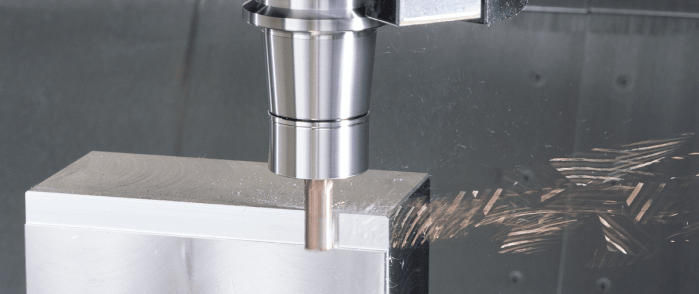If you’re aiming for fast and efficient ROI in machining processes, extending the lifespan of cutting tools is one of the most critical factors to consider. Many focus on reducing wear through cutting speeds, feed rates, accurate programming, and tool coatings. However, how a cutting tool is held is a key factor in maximizing the efficiency of consumables. Among various variables, the tool holder is a stable component, and selecting the correct one can significantly extend the life of cutting tools.
Choose Holders That Control Runout
In manufacturing processes, ensuring uninterrupted and balanced contact between the tool and the workpiece is essential to minimize wear. Every cutting edge must bear an equal load. If runout (variation in the tool’s rotational radius) occurs, it adversely affects tool life.
A simple rule measures the impact of different runout levels on tool life: the “One Tenth = 10% Rule.” This rule states that reducing runout by one-tenth improves tool life by approximately 10%. For example, reducing runout from five tenths to one tenth can extend tool life by 40%.
To illustrate the significance of this, tests compared two carbide drills of the same diameter: one with a runout of 0.0008” and the other with 0.0006”. The drill with lower runout achieved 2,300 holes, while the higher-runout drill managed only 800. This clearly demonstrates the impact of runout on tool life.
Extend Tool Life with Collet Chucks
One effective way to prolong tool life is by using collet chucks. These holders are known for their high precision, high-speed capabilities, and versatility. However, as the length-to-diameter ratio increases, the holder’s effect on the tool becomes more significant, introducing the risk of runout. To maximize the performance of collet chucks, consider the following:
- Bearing Nuts: Provide smooth clamping and reduce chuck wear.
- Durable Pull Studs: Made from strong, durable metals to maintain accurate tool positioning.
- Collet Collapse Design: Instead of expanding, collets collapse inward toward the tool, improving grip strength and concentricity.
Prolong Tool Life with High-Speed Holders
High-speed machining generates significant forces on the tool, leading to uneven loading and early wear. To extend tool life in high-speed applications, consider:
- High Clamping Force: The long contact area of the internal taper increases grip strength and minimizes uneven loads.
- Holder Balance: Balance is crucial for high-speed applications. Refer to ISO 16084, a standard specifically developed for rotating tool systems.
- Dual-Contact Holders: Enhance stability at high speeds and ensure full contact between tapered surfaces.
Improve Tool Life with Long-Reach Holders
For operations requiring long reach, precise tool holding is critical. To maintain stability in long-reach applications, focus on:
- Hydraulic Chucks: Offer excellent performance due to their vibration-damping capabilities in long-reach scenarios.
- Assembly Balance: Factory-balanced holders, with pull studs and cutting tools installed, are ideal for long-reach applications.
- Regular Maintenance: Keeping holder bores clean and conducting periodic grip strength tests extend tool life.
Conclusion
Selecting the right tool holder is critical for extending tool life and improving efficiency. To maximize productivity and minimize consumable waste in machining processes, consider investing in quality tool holders. A properly selected holder ensures longer tool life and lower per-part costs, making a substantial difference in your manufacturing operations.
